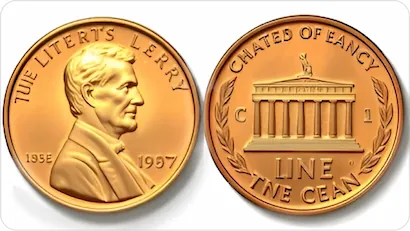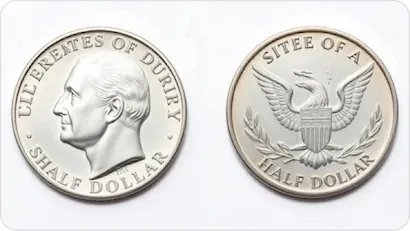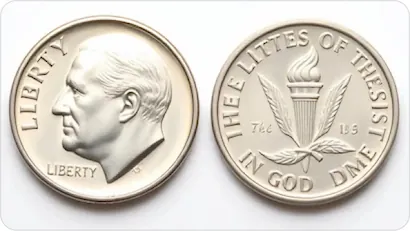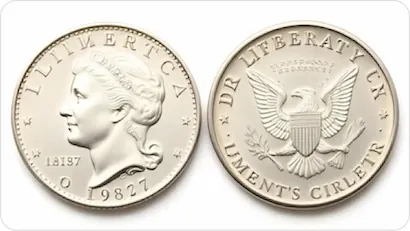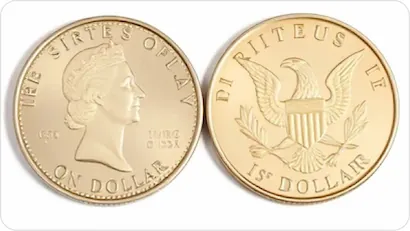Penny Grading Scale: Conditions Explained
Pennies are the tiniest storytellers that carry vivid and rich American backgrounds through time. Those who possess these coins know how complicated it may be to evaluate such collections on the spot. Yes, there exist numerous numismatic authorities that can provide one with legal certification of their pennies, yet this is generally time-consuming and not really necessary for an average coin lover.
At times, when you are interested in collecting and coin grading on your own (even before appealing to professional assessors), it might be reasonable to learn how the penny coin grading scale works. Let us see.
Types of Pennies
As such, pennies (commonly known as cents) comprise a fine group of coins that can be attributed to different eras and epochs of numismatic art. Here is a brief description of some outstanding kinds of pennies that collectors cherish most of all.
| Image | Name | Mintage Years | Prominent Features |
|---|---|---|---|
| Flowing Hair Chain and Wreath Cents | 1793 | A coin with a dramatic image of Liberty with flowing hair | |
| Draped Bust and Classic Head Cents | 1796-1814 | Large copper coins, which display Liberty with sophisticated elements | |
| Coronet and Braided Hair Large Cents | 1816-1857 | Large cents, depicting Liberty with a coronet or braided hair | |
| Flying Eagle Cent | 1856-1858 | Cent featuring a soaring eagle | |
| Indian Head Penny | 1859-1909 | A penny that portrays Liberty wearing a Native American headdress | |
| Lincoln Wheat Penny | 1909-1958 | The first American coin to represent a real person, i.e., Abraham Lincoln | |
| Lincoln Memorial Penny | 1959-2008 | A tribute to Abraham Lincoln that demonstrates the portrait of the nation`s 16th president and the Lincoln Memorial | |
| Shield Penny | 2010-Present | A coin that features an impressive shield design on its reverse side |
Each type is unique and distinct, but the general rules of appearance remain the same. Now, let us turn to the penny coin grading chart which is meant to reveal general characteristics of each condition level.
Penny Grading Chart: Circulated Grades
| Image | Features | Description |
|---|---|---|
| Poor (P-1) | Hardly discernible coins with the absolute majority of details vanishing. Lincoln's profile could be blurry or unidentifiable on Lincoln pennies, while other types may bear not clearly defined wheat shields or stalks | |
| Good (G-4) | Key components, like the Indian Head or Lincoln's profile, are discernible but severely damaged, though the date and mintmark are usually readable | |
| Very Good (VG-8) | The Indian Head's feathers and Lincoln's hair are smooth but apparent. Besides, it is possible to partially distinguish shield edges or heat lines | |
| Fine (F-12) | Moderate wear with distinct touches on prominent places, such as the feathers of the headdress or Lincoln's cheekbone. Elements on the reverse, such as shield layouts or wheat stalk lines, are more distinct | |
| Very Fine (VF-20) | Moderate wear but sharper characteristics. The majority of the shield elements or wheat stalks are still in place |
Coin Grading Scale Valuable Penny Chart: Uncirculated Types
| Image | Features | Description |
|---|---|---|
| Extremely Fine (EF/XF-40) | Little wear on high points, such as the tips of the headpiece or Lincoln's cheekbone | |
| About Uncirculated (AU-50) | Mint luster is still good, with minor signs of wear on the highest points, including Lincoln's jawline or the top of the shield | |
| Mint State (MS-60 to MS-70) | Perfect, flawless coins with no signs of wear but complete design features, sharp edges, and undisturbed mint luster | |
| Proof Coins | A mirror-like surface. Issued as a part of special Lincoln anniversary programs or present Shield pennies |
Grading Criteria to Note
Wear and Tear:
The first areas that the wear appears on are high points, like wheat stalks or Lincoln's cheek. When the coin is in use, finer details may be gradually lost as these areas become smoother. By the way, sharp rims suggest less circulation.
Strike Quality:
When it comes to grading, accuracy is fundamental. A high-quality strike is always detected via distinct features, such as the wheat stalks or Lincoln's profile. Particularly for rarer kinds, pennies with weak or partial strikes—such as those that are off-center—may be worth less than the rest.
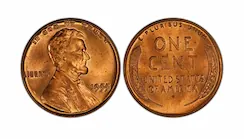
Luster:
The shine that a freshly minted penny maintains is known as mint luster. While it may fade away with age or wear, uncirculated pennies should still have this brilliance whenever you take a look at the instance. Copper pennies' natural patina, which develops over time, adds character, but it should be uniform and free from noticeable corrosion and discoloration.
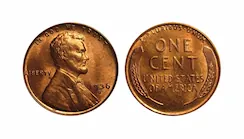
Color and Appearance:
Depending on age and preservation efforts, a penny's color usually varies from reddish to reddish-brown. Good preservation technique may be exhibited by a consistent color with no uneven spots.
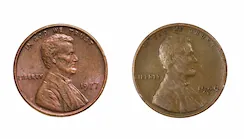
By the Way… Coin Grading by US Coin Type
Employing worth money penny coin grading scale may be a bit difficult at first, but Coin ID Scanner may make this experience, simpler, smoother, and less stressful. Identify coins and assess their grade with a reliable app by your side.
